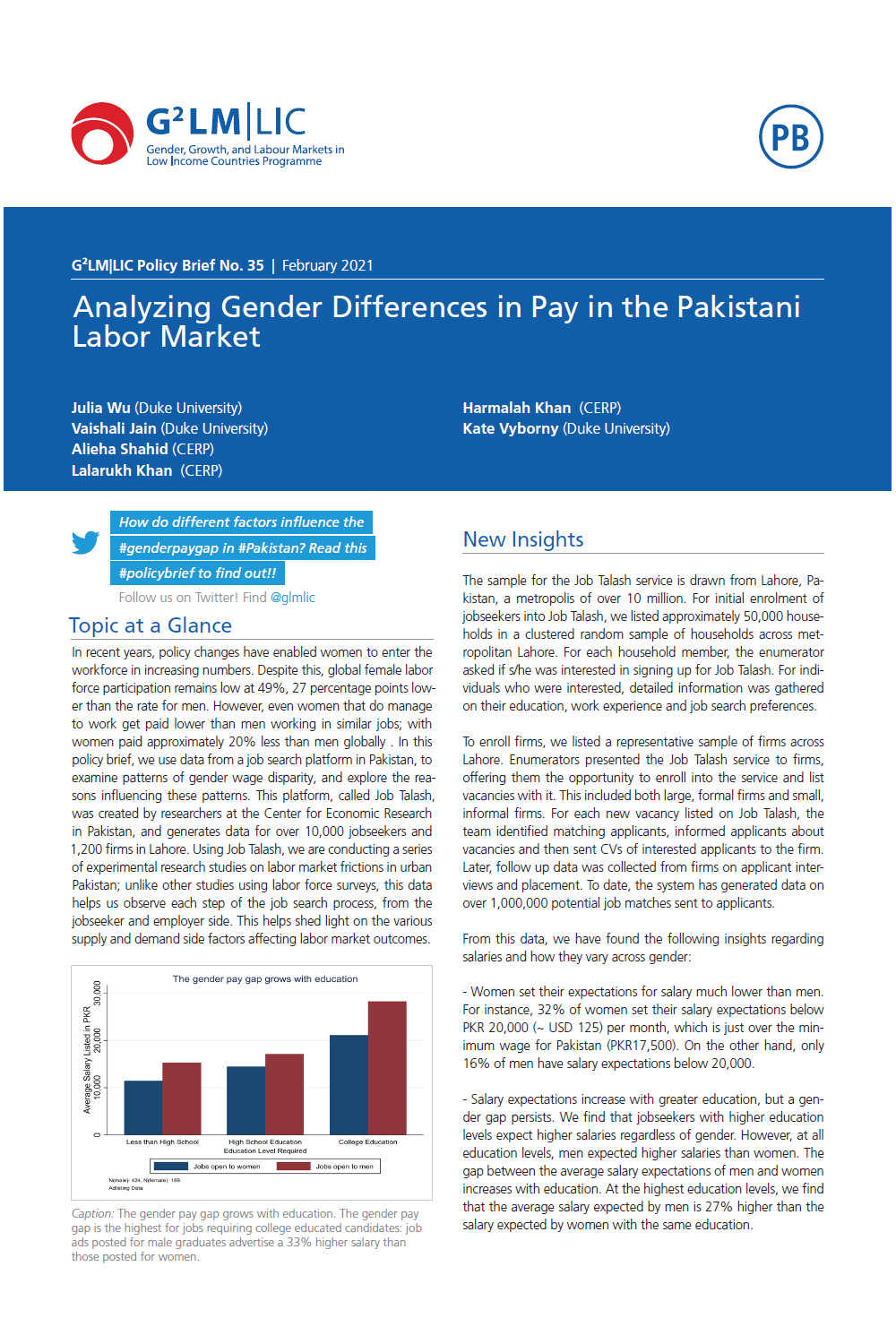In recent years, policy changes have enabled women to enter the workforce in increasing numbers. Despite this, global female labor force participation remains low at 49%, 27 percentage points lower than the rate for men. However, even women that do manage to work get paid lower than men working in similar jobs; with women paid approximately 20% less than men globally . In this policy brief, we use data from a job search platform in Pakistan, to examine patterns of gender wage disparity, and explore the reasons influencing these patterns. This platform, called Job Talash, was created by researchers at the Center for Economic Research in Pakistan, and generates data for over 10,000 jobseekers and 1,200 firms in Lahore. Using Job Talash, we are conducting a series of experimental research studies on labor market frictions in urban Pakistan; unlike other studies using labor force surveys, this data helps us observe each step of the job search process, from the jobseeker and employer side. This helps shed light on the various supply and demand side factors affecting labor market outcomes.

Analyzing Gender Differences in Pay in the Pakistani Labor Market
- Kate Vyborny
- Julia Wu
- Vaishali Jain
- Lalarukh Khan
- Harmalah Khan
- Alieha Shahid